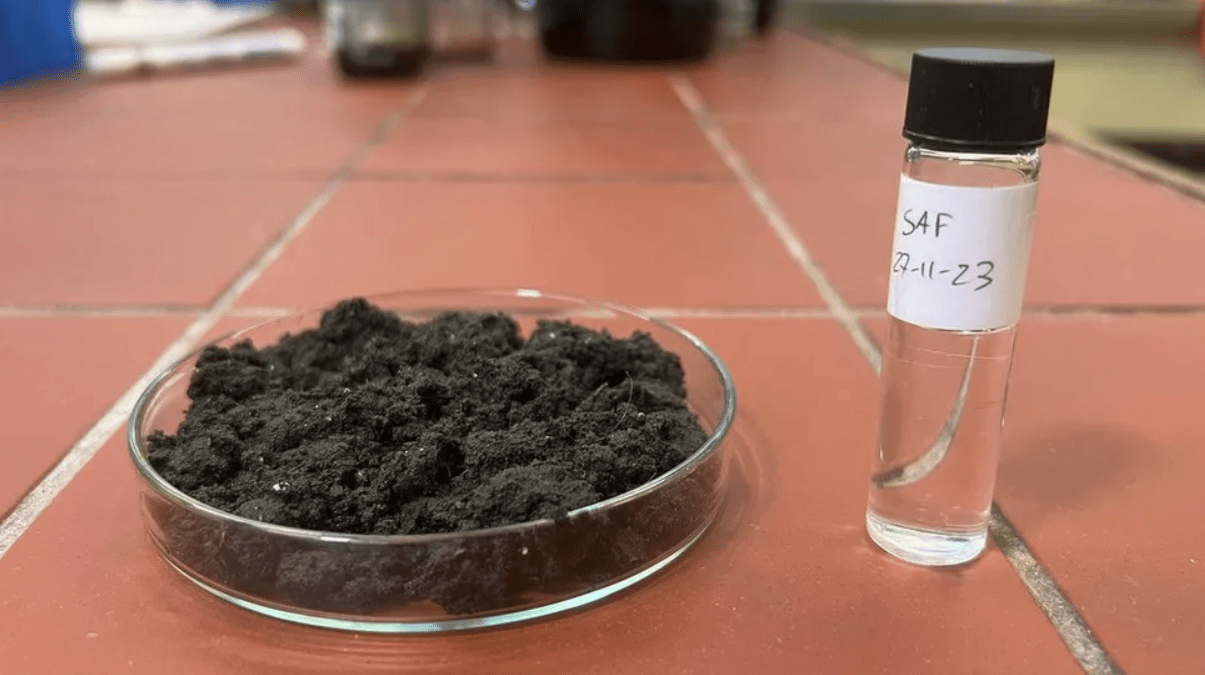A groundbreaking aviation company in Gloucestershire has successfully developed a revolutionary jet fuel derived entirely from human sewage. Firefly Green Fuels, under the leadership of CEO James Hygate, aimed to identify a low-value feedstock that was abundantly available, leading them to explore sewage as a potential source. The chemical transformation conducted by chemists at a Gloucestershire lab resulted in kerosene made from waste, with independent tests by international aviation regulators confirming its near-identical nature to standard fossil jet fuel.

Collaborating with Cranfield University, Firefly analyzed the life cycle carbon impact of their innovative fuel. The findings indicated an impressive 90% reduction in carbon footprint compared to traditional jet fuel. While acknowledging the energy consumption during production, Hygate emphasized the substantial overall reduction when considering the fuel’s life cycle.

Aviation’s contribution to global carbon emissions stands at around 2%, a figure on the rise. Reducing carbon in aviation remains a formidable challenge, and while electric planes and hydrogen-electric powered flights are in development, a widespread shift to new technologies is expected to take years, if not decades. Consequently, the quest for greener kerosene production methods, free from fossil fuels, has become a global priority.
Firefly’s journey began two decades ago on a small farm in Gloucestershire, where Hygate initially converted rapeseed oil into biodiesel for cars and trucks. The company, now named Green Fuels, expanded its reach globally, providing equipment to turn cooking oil into biodiesel. The transition to green jet fuel led them to explore various sources, including waste oils, food waste, and agricultural scraps, before turning to human waste.

The collaboration with Dr. Sergio Lima from Imperial College, London, resulted in a process that transforms human waste into what they term “bio-crude,” a substance chemically similar to crude oil. This bio-crude is then refined into bio-kerosene, which has been independently tested and found to have a chemical composition nearly identical to traditional fossil jet fuel.
Tests are ongoing at the DLR Institute of Combustion Technology in Germany, with future assessments planned by the UK SAF Clearing House. The UK Department of Transport has recognized the significance of this research, granting a £2 million fund to support further developments.
Hygate’s calculations reveal that the annual sewage produced by a single person could generate 4-5 liters of bio jet fuel. While flying a passenger jet from London to New York would require the annual sewage output of 10,000 individuals for the round trip, he emphasizes the potential, stating that the UK’s total sewage could meet about 5% of the country’s aviation fuel demand.

Sustainable Aviation Fuels, made from waste oils, corn oils, or other non-fossil sources, are crucial in reducing carbon emissions from aviation. Despite emitting a similar amount of CO2 during flight, their origin from plants captures CO2 during growth, resulting in an 80-90% reduction in fossil fuel carbon emissions. Although some environmental campaigners call for reduced air travel and alternative uses for crops, the use of sewage-based fuel is considered more acceptable, given society’s unavoidable production of human waste.
Currently, only 0.1% of aviation fuel is classified as sustainable, making Hygate’s target of 5% a substantial leap. Firefly Green Fuels is now seeking funding to construct a full-scale demonstrator factory in the UK, with Hygate recognizing the global potential of their sewage-based aviation fuel, particularly in densely populated cities. The development represents a significant stride toward more sustainable aviation practices and aligns with the increasing emphasis on alternative fuel sources to address climate change.


